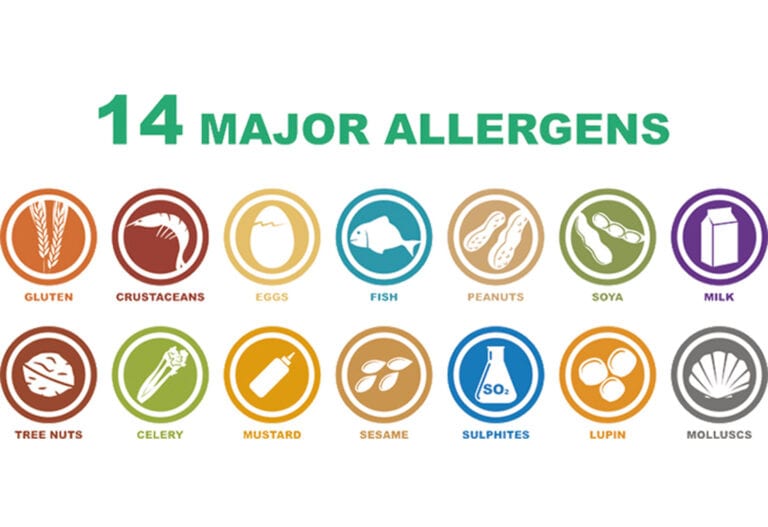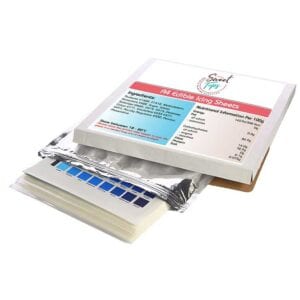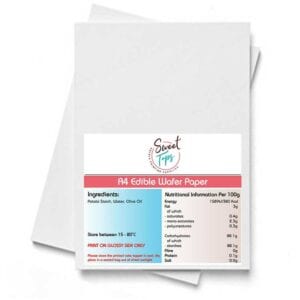Food allergens and cake baking
Happy new year to you all! It looks like we’ll be having more time in our own kitchens again this year. More time to explore new ingredients and learn new baking skills! But what if you have a family member with food allergies or intolerances? Do you know what food allergens to avoid in your kitchen? And do you know enough about intolerances and serious allergic reactions?
Here, I’m going to explain a bit more about food allergens, what signs to look out for in terms of allergic reactions, and how we can finish your cakes to perfection, with our vegetarian and vegan range of cake toppers!
The 14 most common food allergens

It’s estimated that one in 100 children suffer with an allergy or intolerance. Around the same number as children or adults who are affected by gluten intolerance - Coeliac Disease.
But there are many more causes of food intolerances and potential allergic reactions, which as a nation we are gradually becoming more aware of.
And whether we are genuinely becoming more intolerant of certain food types, changing our eating habits through healthier choices or for medical reasons, it is useful to know the most common food allergens (as listed by Allergy UK).
The difficulty is that they are not always just seen or used in their natural form. They are often ‘hidden’ ingredients in dishes or sauces, so not as easy to identify.
This is the top 14 most common, listed here in alphabetical order, along with some of their additional uses:
- Celery – including stalks, leaves, seeds, and celeriac.
- Crustaceans – prawns, scampi, crab, shrimp, and lobster.
- Eggs – used in sauces, pastry, and cakes.
- Fish – which is often used in sauces and dressings.
- Gluten (including cereals containing gluten) – in food made with flour such as bread and pasta.
- Lupin – found in bread, pastries, and pasta.
- Milk – butter, cheese, cream all contain milk powders.
- Molluscs – snails, whelks, and squid.
- Mustard – can be in liquid or powder form as well as natural seeds.
- Nuts – almond, cashew and hazelnuts.
- Peanuts – can be found in cakes, biscuits, and sauces.
- Sesame – the seeds are often found in burgers, bread sticks and salads.
- Soya – various beans including Tofu and Edamame.
- Sulphur dioxide (sometimes known as sulphites) – often found in drinks and dried fruit, such as raisins and sultanas.
Dairy intolerance is common amongst young children, and simply put means they must avoid cow’s milk or any products containing cow’s milk. Soy or rice milk are great alternatives for baking.
And of course, another ingredient of your cakes and pastries which can cause reactions is eggs. Don’t let that put you off though, there are other things you can use such as egg free dough and pre-rolled pastry.
Nut allergy sufferers experience different reactions from mild to extremely serious. If you are in doubt, avoid any type of nuts altogether. This includes peanut butter and any peanut based spreads.
Gluten and wheat free – you may have to hunt it out, but most supermarkets now have a ‘free from’ aisle. You no longer miss out on family movie night munchies, as you can buy snacks, crisps and cakes, popcorn, and pizza – all of which detail their ingredients and clearly state what they are ‘free from’ and whether suitable for vegetarians and vegans on the packaging too!
Food allergies and reactions are not just about the food allergens in the food itself though. Safe preparation is just as important.
Avoid cross-contamination of any of the food types or ingredients which might cause problems. Kitchen utensils, cutlery and plates may need to be kept in separate sections within your kitchen.
Allergic reactions – the signs and symptoms
These symptoms of food allergies, according to the Food Standards Agency, can range from mild to life threatening:
- Abdominal pain/cramps.
- Bloating.
- Tingling/itching in the mouth.
- Metallic taste in mouth.
- Nausea and vomiting.
- Difficulty breathing or shortness of breath.
- Wheezing.
- Swelling of the tongue.
- Tight throat, trouble swallowing.
- Dizziness.
- Weak pulse/drop in blood pressure.
- Symptoms of shock such as skin rash (hives) and flushed skin.
- Anaphylaxis, which can be life threatening.
Although there are varying levels of severity, and treatments, if you are ever in doubt, call for medical help immediately.
Avoid food allergens with our professional cake toppers!
If you haven’t had chance already, now is a perfect time to get the kiddies involved with your cooking and baking. Or surprise your family or friends with a birthday treat.
And what better way to add the finishing touches to your cakes, buns, and cookies than with bespoke personalised edible toppers?!
We supply edible icing sheets which are great on either dry or wet surfaces. Easy to use, as you just peel away from the backing sheets. And they can be used on fondant icing, marzipan, cream, and butter cream, and even ice cream too!

Edible wafer or rice paper is another ideal topper for cakes and cupcakes.

And we use edible ink run through our top-quality printing machines, to give you the best finish - even on a cake!
As a supplier of edible printing products, we follow strict Food Standards Agency guidelines by using detailed labels. *
Listed below are the ingredients for our edible printing supplies, so you can make sure you are only using what is safe for your needs.
Edible Icing Sheets - gluten free and nut free. Suitable for vegetarians and vegans.
Ingredients: Modified starches (E1422, E1412), maltodextrin, humectant (E422), sugar, water, thickeners (E460i, E414, E415), dextrose, food colour (E171), emulsifiers (E435, E471, E491), preservative (E202), flavour, acidity regulator (E330)
Edible Wafer Paper
Ingredients: Potato starch and water.
Edible Ink
Ingredients: Black: water; humectant (E422); propylene glycol (E490); preservative (E202); food colours - carmoisine (E122), E133, tartrazine (E102); acidity regulator (E330).
Yellow: water; humectant (E422); propylene glycol (E490); preservative (E202); food colours - tartrazine (E102); acidity regulator (E330).
Magenta: water; humectant (E422); propylene glycol (E490); preservative (E202); food colours - carmoisine (E122), ponceau (E124); acidity regulator (E330).
Cyan: water; humectant (E422); propylene glycol (E490); preservative (E202); food colours - E133, E124, tartrazine (E102); acidity regulator (E330)
We hope you have found this information useful and feel ready to get baking knowing you have everything covered.
*Please contact us if you would like any more information on our products and ingredients. And for more details on food allergens, visit the Food Standards Agency website.